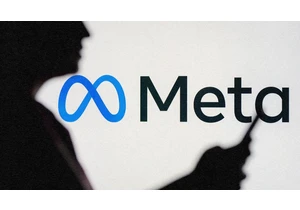There’s a cat-and-mouse game between those using generative AI chatbots to produce text undetected and those trying to catch them. Many believe they know the telltale signs—though as a journalist fond of the word “delve” and prone to em-dashes, I’m not so sure.
Researchers at four U.S. universities, however, have taken a more rigorous approach, identifying linguistic fingerprints that reveal which large language model (LLM) produced a given text.
“All these chatbots are coming out every day, and we interact with them, but we don’t really understand the differences between them,” says Mingjie Sun, a researcher at Carnegie Mellon University and lead author of the study, which was published in Cornell University’s preprint server arXiv. “By training a machine learning classifier to do this task, and by looking at the performance of that classifier, we can then assess the difference between different LLMs.”
Sun and his colleagues developed a machine learning model that analyzed the outputs of five popular LLMs, and was able to distinguish between them with 97.1% accuracy. Their machine learning model uncovered distinct verbal quirks unique to each LLM.
ChatGPT’s GPT-4o model, for instance, tends to use “utilize” more than other models. DeepSeek is partial to saying “certainly.” Google’s Gemini often prefaces its conclusions with the word “essentially,” while Anthropic’s Claude overuses phrases like “according to” and “according to the text” when citing its sources.
xAI’s Grok stands out as more discursive and didactic, often reminding users to “remember” key points while guiding them through arguments with “not only” and “but also.”
“The writing, the word choices, the formatting are all different,” says Yida Yin, a researcher at the University of California, Berkeley, and a coauthor of the paper.
These insights can help users select the best model for specific writing tasks—or aid those trying to catch AI-generated text masquerading as human work. So, remember: according to this study, if a model utilizes certain words, it’s certainly possible to identify it.
Autentifică-te pentru a adăuga comentarii
Alte posturi din acest grup

Every now and then, you run into a tool that truly wows you.
It’s rare—especially nowadays, when everyone and their cousin is coming out with overhyped AI-centric codswallop tha

Tesla released its quarterly earnings report on Tuesday, its first since the company’s chief executive, Elon Musk, took up residence in the Trump White House and immediately began trying to fire f

There’s never a dull day in the world of weight-loss medication. This week brought new restrictions on compounded GLP-1 medication, the cheaper, copycat versions of brand-name drugs that tel

In December 2023, I wrote an article exploring Apple CEO Tim Cook’s most likely successors, because t

“Meta profits, kids pay the price,” was the message delivered by dozens of grieving families at the doors of Meta’s Manhattan office on Thursday.
Forty-five families traveled from

The world’s auto industry is getting a shake-up from Chinese automakers that

There’s Blue Sky and then there’s Bluesky.
Blue Sky, a paper goods company
